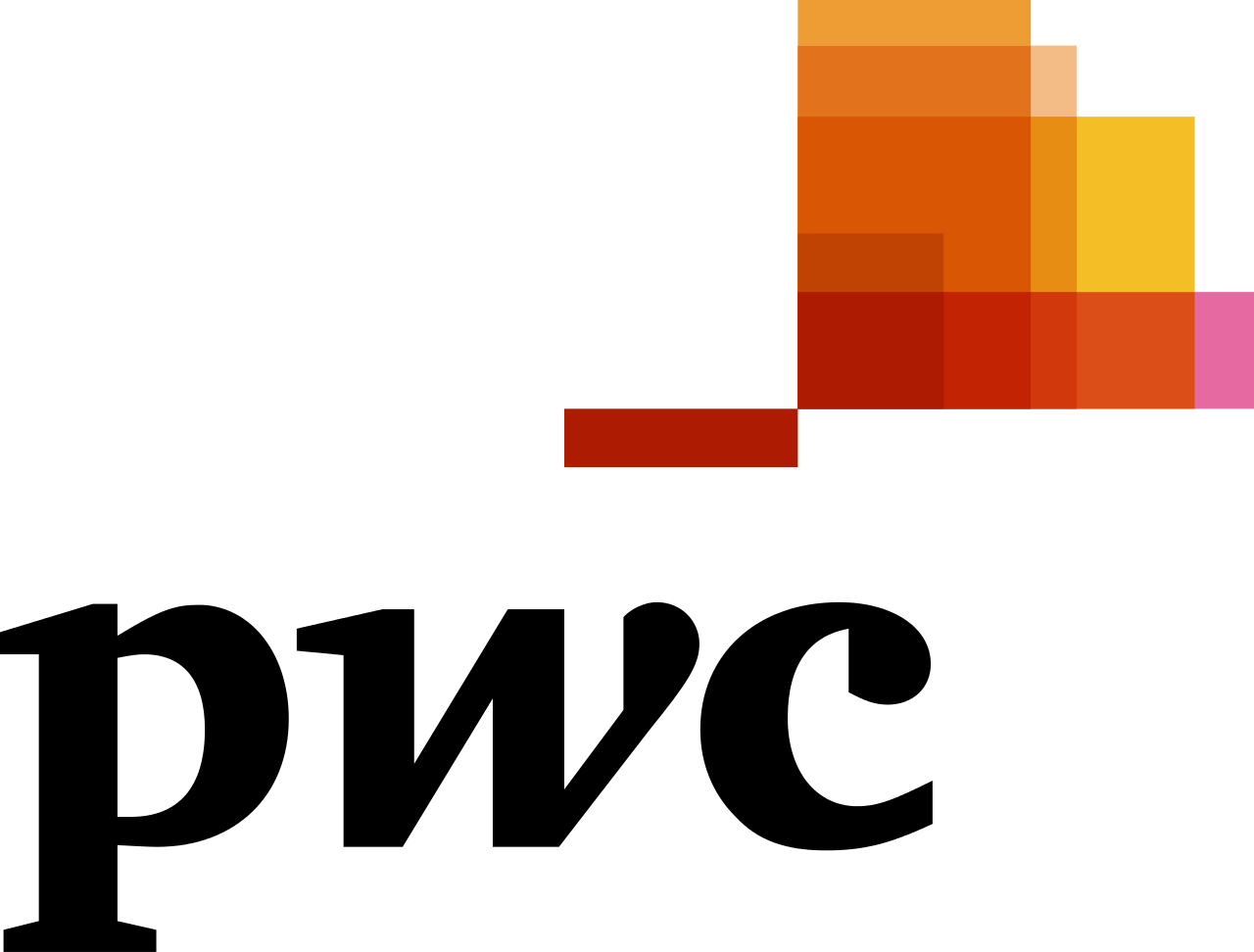PVH Pushes to Make the Fashion Industry More Equitable With Bold DEI Commitments
In early 2021, PVH, the global fashion company with such iconic brands as Calvin Klein and Tommy Hilfiger, released a diversity, equity and inclusion (DEI) report on the industry in collaboration with the Council of Fashion Designers of America (CFDA).
Based on a McKinsey survey with over 1,000 responses and focus groups that included college students and emerging designers, the report revealed an industry with major barriers to advancement for African Americans and other minority groups. Fifty percent of employees of color surveyed reported that a career in the fashion industry was not equally accessible to all qualified candidates, and almost one in four questioned the meritocracy of opportunities.
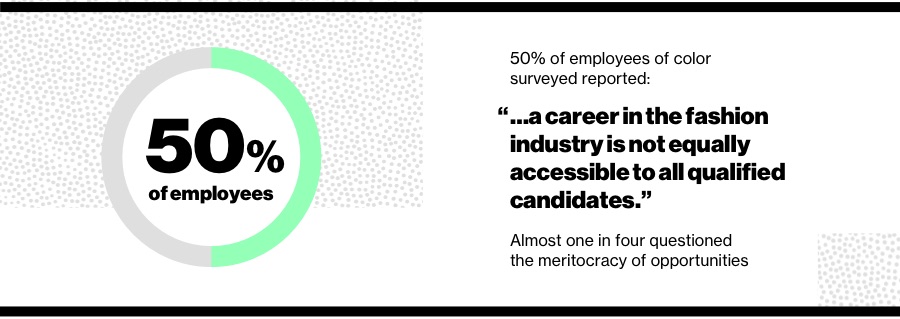
“Most fashion companies—like many other companies in retail, technology and financial services—have a lot of good diversity at the entry level, individual contributor level and in more junior parts of the organization,” says Lance LaVergne, PVH’s Chief Diversity Officer and Senior Vice President, Global Talent Acquisition. “But diverse representation is often a pyramid that gets smaller and smaller at the top. When you talk about Black, Hispanic, LGBTQIA+, your non-white, non-male populations, the percentage of representation almost always declines as you move up in an organization.”
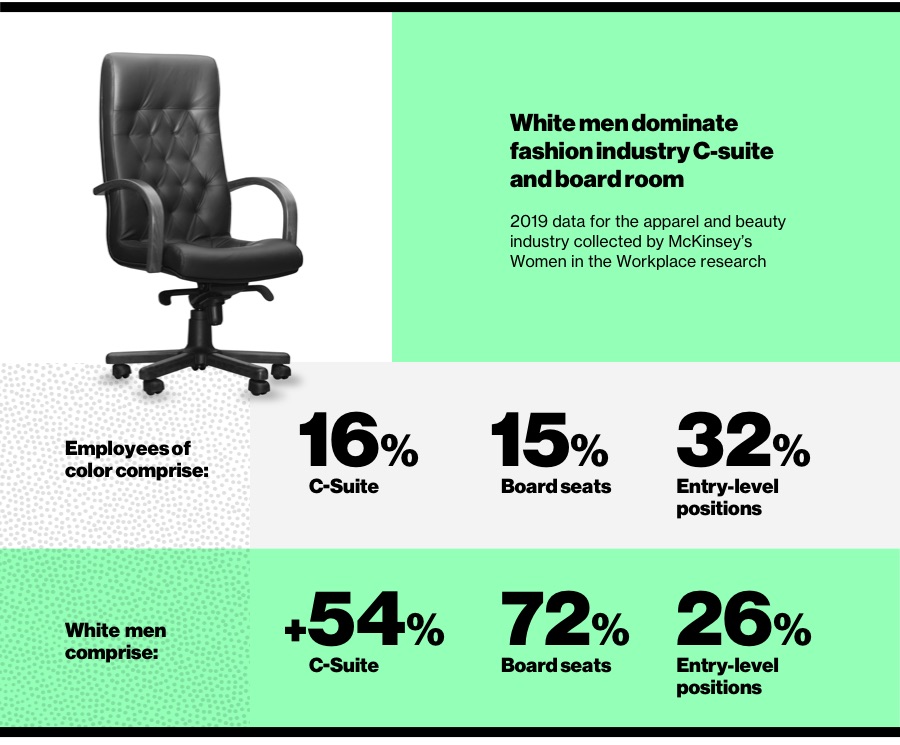
In response to the report’s findings, PVH has rolled out nine global I&D commitments around three pillars of its I&D framework —Workplace, Marketplace and Community. The commitments include creating a more diverse candidate slate for leadership positions, nurturing a culture of inclusivity and developing a supplier diversity program. PVH’s procurement team was already diversifying its supply chain, but the implementation of a formal program has heightened the company’s commitment to the effort.
Moving away from superficial assessments of people
While these three pillars of DEI are not unique to PVH, the fashion industry poses distinct challenges that are well-known to industry insiders.
“What you see specifically in fashion is this notion of taste and aesthetic being a huge barrier for certain populations in fashion,” says LaVergne. “We want to get away from that superficial assessment of people and really dig into the skills, traits and qualities that they bring to the organization to enhance what we’re doing as a company.”
According to LaVergne, these superficialities, including one’s socioeconomic background, exacerbate employment disparities in the high echelons of the industry.
“If you come from a background where you have resources to take an unpaid internship or to attend after hours networking events because you don’t have to take a second job to help pay your rent, then you’re going to have a much higher probability of success and coming back the next year. Compare this to someone who has to have that second job and leave at 5 o’clock because the internship doesn’t pay well or not at all,” he says. “So, the economics of how people gain access to opportunities in fashion can sometimes be a barrier to inclusion.”
How diversity looks in the fashion industry
At PVH, one of the nine commitments is the implementation of a diverse candidate slate requirement that aims for 50% of all U.S.-based candidates interviewed at the Director level and above to represent at least one dimension of diversity such as gender, disability or race.
When people apply for positions in the U.S. at the company, they are asked how they self-identify, and the company uses that information to determine how a candidate pool looks relative to its current internal population. The company is in the early stages of this program, but it’s excited about the potential to create measurable changes at the executive level.
“We’re not dictating who anybody hires because we really want the process to work, but you can’t hire people with different backgrounds if they’re not in the mix,” LaVergne explains. “So, the whole point is to make sure you’ve got people in the mix.”
LaVergne’s leadership of talent acquisition gives him the ability to identify and recruit diverse talent to the company.
“We are not trying to meet a check-the-box exercise,” he emphasizes. “We have to have clear and measurable criteria that we use to assess these candidates, so that we are confident that anybody we put in front of a hiring manager can do the job.”
LaVergne says that the company aims to have gender parity in its senior VP roles.
“We’re close to having that 50-50 balance globally in those roles, and we’re putting things in place to create greater engagement, recruitment and development of women into those senior-level positions.. In the U.S., we want to increase our Black and Hispanic representation at the Director and VP level and overall BIPOC [Black, Indigenous and people of color] representation at the SVP-plus level.”
The company plans to increase total BIPOC representation at SVP level and above by 50% and double Black and Hispanic/Latinx representation at Director and VP levels in the U.S. by 2026.
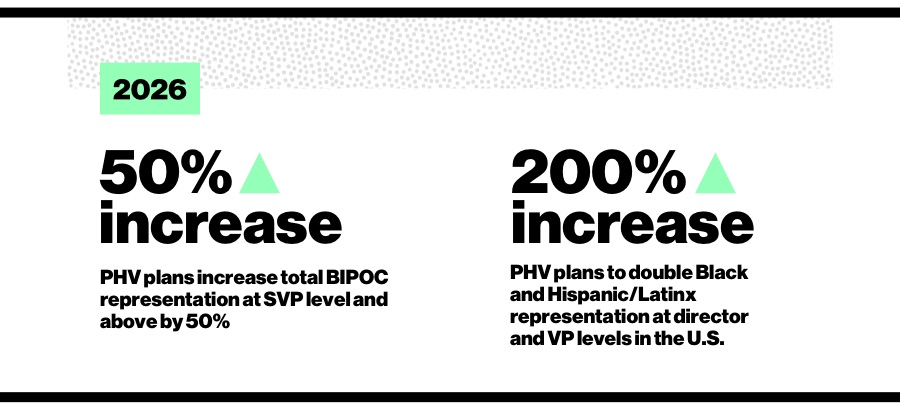
Creating a culture of inclusivity
By the end of 2022, the company wants to deliver unconscious bias training to all 33,000 PVH associates globally. The company has partnered with Franklin Covey, a Salt Lake City-based firm that helps companies with a variety of organizational solutions, to lead the training.
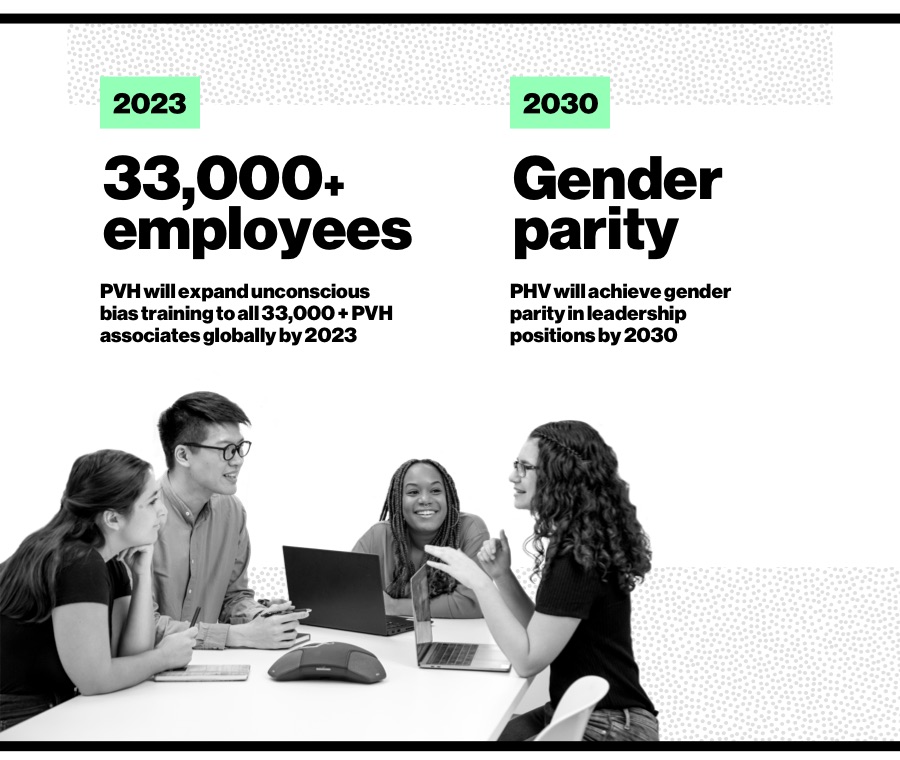
Understanding the regional and cultural differences of its employee base, PVH doesn’t use a one-size-fits-all approach to the training.
“The first part is to help people understand that those biases exist,” LaVergne says. “And then from there, you can hone in on those specific and unique dynamics and issues for you, your arena, your environment, where you operate. That’s how you can do this across the globe. The ultimate objective is to help people recognize those issues and their own behaviors—but more importantly, to understand the importance of trying to mitigate and minimize those things so that everyone who works here can feel like they belong, that this is a place for them, and that they have just as much of an opportunity for success as anybody else here at PVH.”
Yet LaVergne isn’t naive to the reality that creating a truly inclusive culture is very difficult work.
“It’s ongoing, and you have to continually educate people, not only on the topic of unconscious bias, but on other topics such as microaggression and the unique and interesting ways that difference plays into how people show up every day,” he says.
PVH is a signatory of CEO Action for Diversity & Inclusion, a coalition founded in 2017 on a shared belief that DEI is a societal issue, not a competitive one, and that collaboration and bold action from the business community—especially CEOs—is vital to driving change at scale. More than 2,000 CEOs have pledged to create a more diverse, equitable and inclusive workforce.
